Accessibilità
Accessibilità is a family of open source hardware and software for wheel chairs! Starting with control interfaces first with the eventual goal of producing an entire open source electrical system someone can use to build a wheel chair or retrofit an existing one with a more modular, robust, and serviceable one.
Overall System Architecture we aim to achieve as a retrofit system for the Omegatrax Wheel Chair :
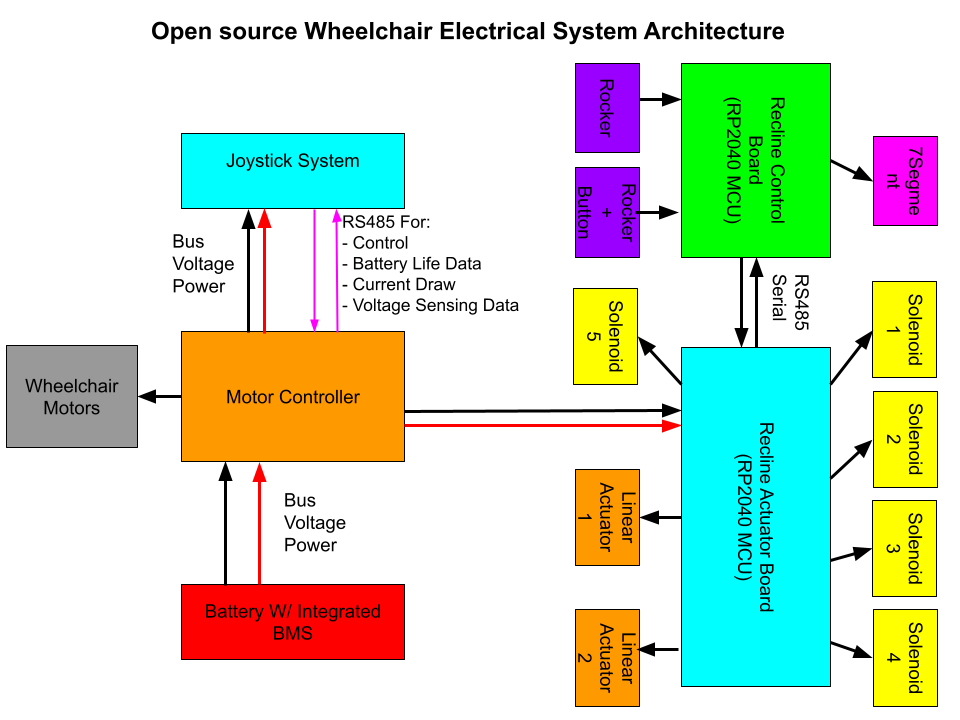
Projects:
JoyStick-HID
A custom open source PCB for controlling an open source wheel chair! This PCB contains all the necessary electronics for interfacing and powering all the components/peripherals that will be used to build a wheel chair human machine interface consisting of this PCB, analog JoyStick module, buttons, rotary switches, and 3D printed housing. JoyStick-HID is just one of the many PCBs being developed for our open source wheel chair electrical system we are developing with the Accessibilita project for the Mobility Independence Foundation (themif.org) !!

Quick Specs:
- STM32F446RET6 100TQFP ARM Cortex M4 Microcontoller
- ARM Cortex M Serial Debu Interface/connector for in system programming and development
- MAX3535ECWI+T RS485 Transceiver for communicating with main motor controller
- D24V22F3 2.5A 3.3VDC Voltage Regulator Module
- 24V Power Input with High Current Pheonix Contact Connector
- 8 Debug LEDs for STM32F446RET6
- Onboard Battery for STM32F446RET6 RealTime Clock
- Interface for JoyStick, JH-D202X-R2/R4 Joystick 5K https://protosupplies.com/product/jh-d202x-r2-r4-joystick-5k/
- Interface for two Rotary Switches
- Interface for 8 Momentary swiches/buttons
- Interface for LED driver board, this additional board drives LEDs in the arm wrest indicating battery level and current set speed
- STM32 will run FreeRTOS w/ Custom Processes written for all functionality with priority scheduling for safety rated functions.
This board is intended as a developmental platform that can function in the field, it has all the features needed to control the wheel chair with additional feature that will make software development easier.
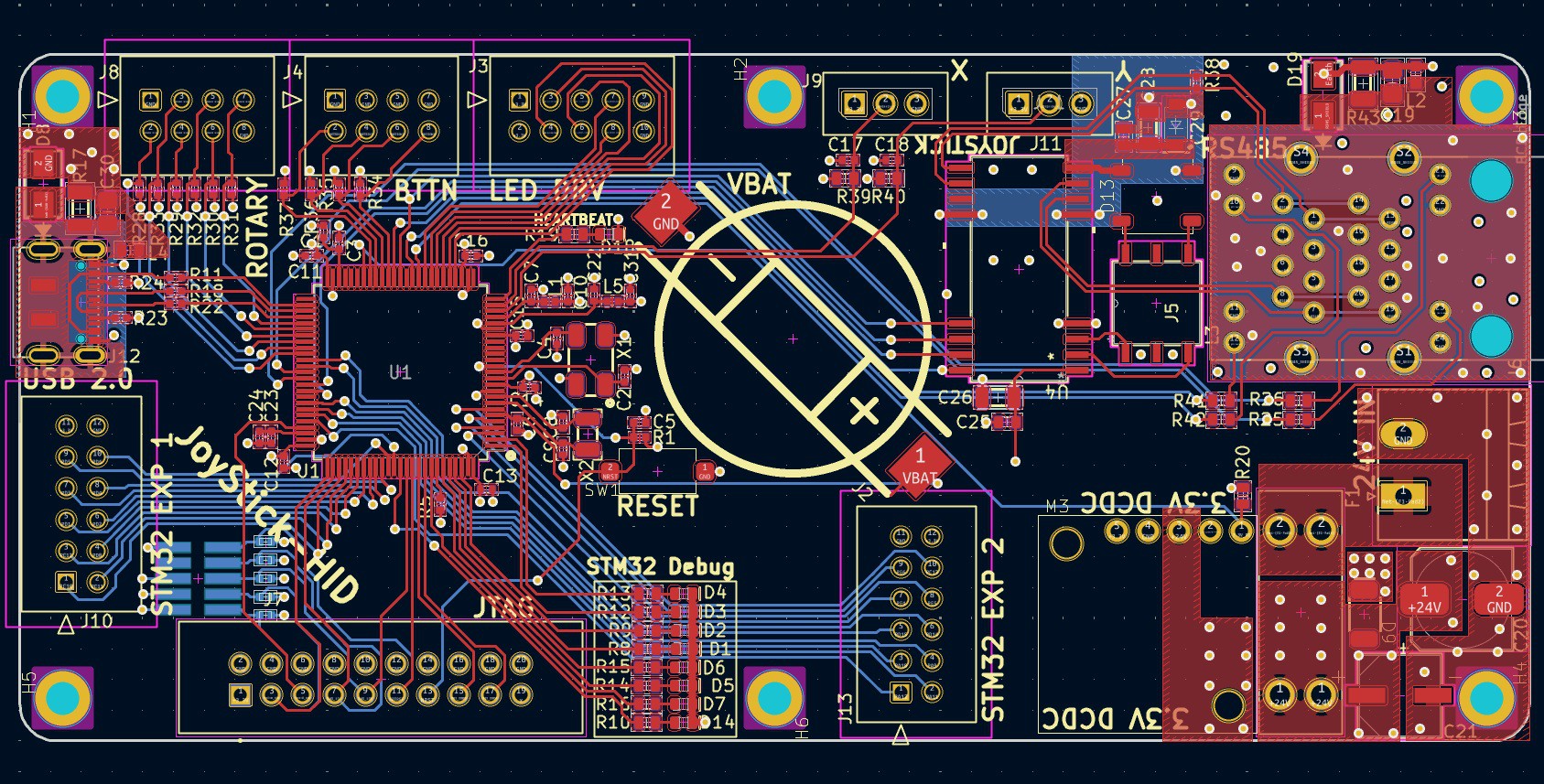
3D Renders of JoyStick-HID Hat in KiCAD 8.0 3D Viewer
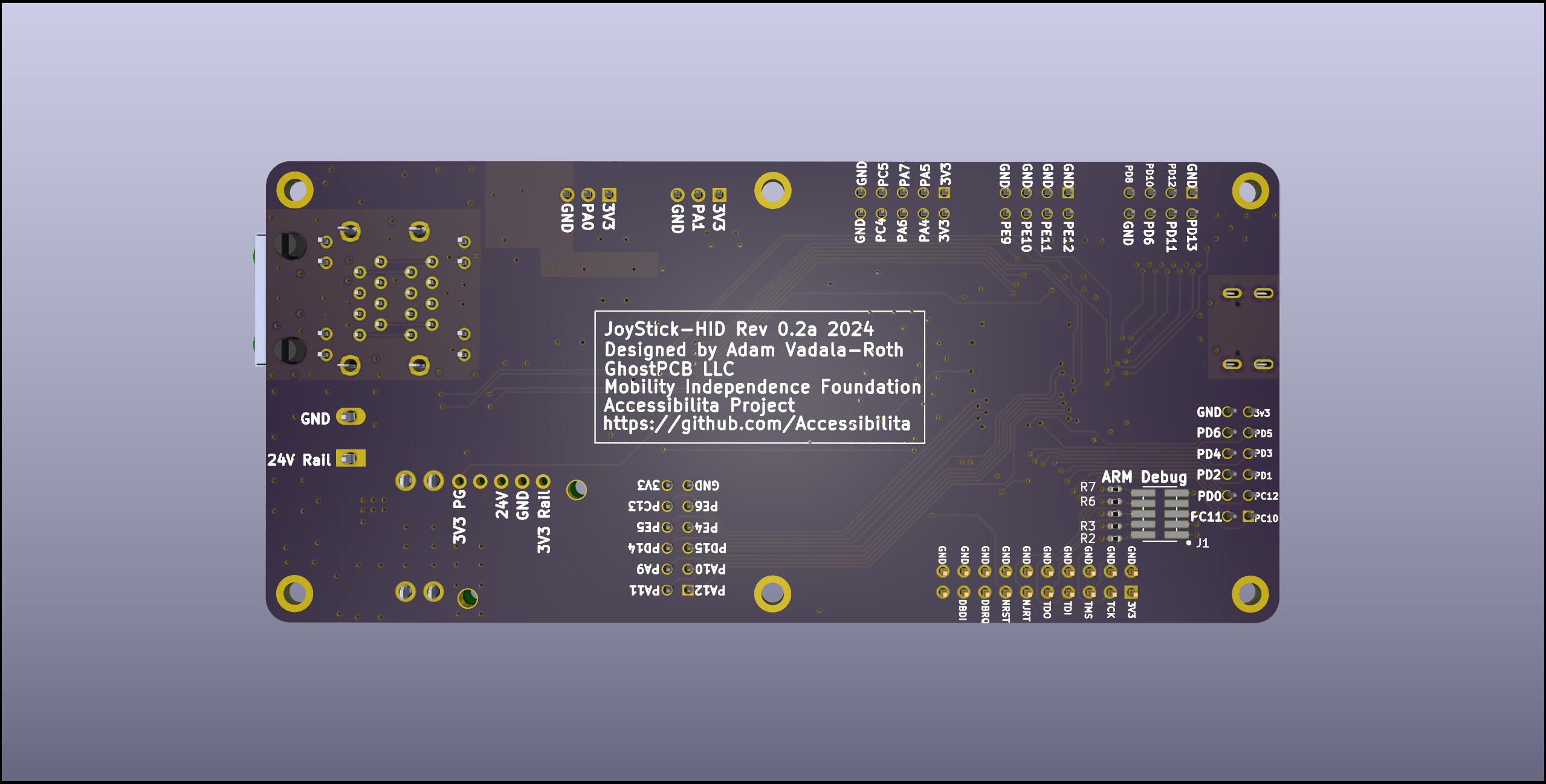
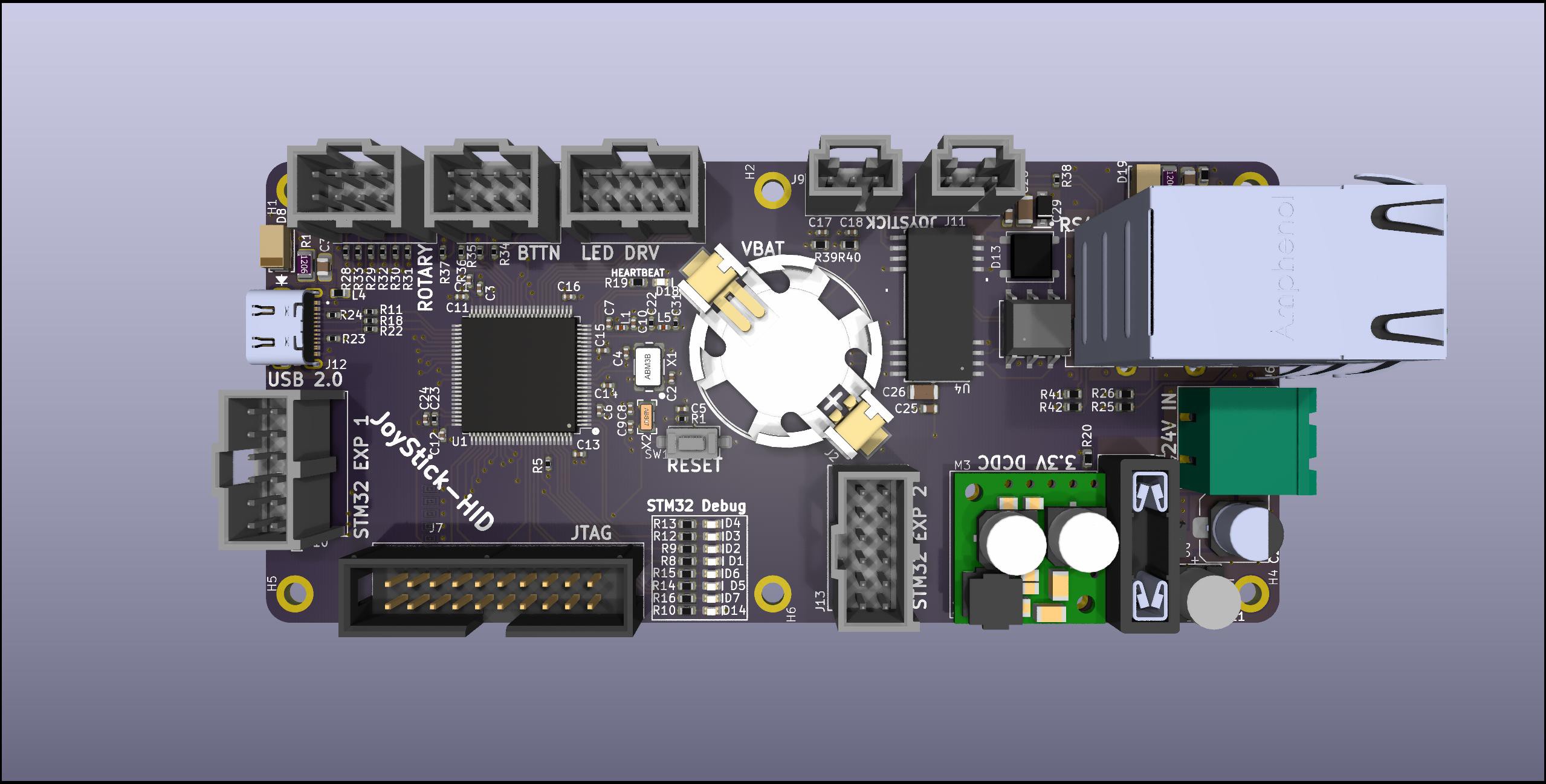
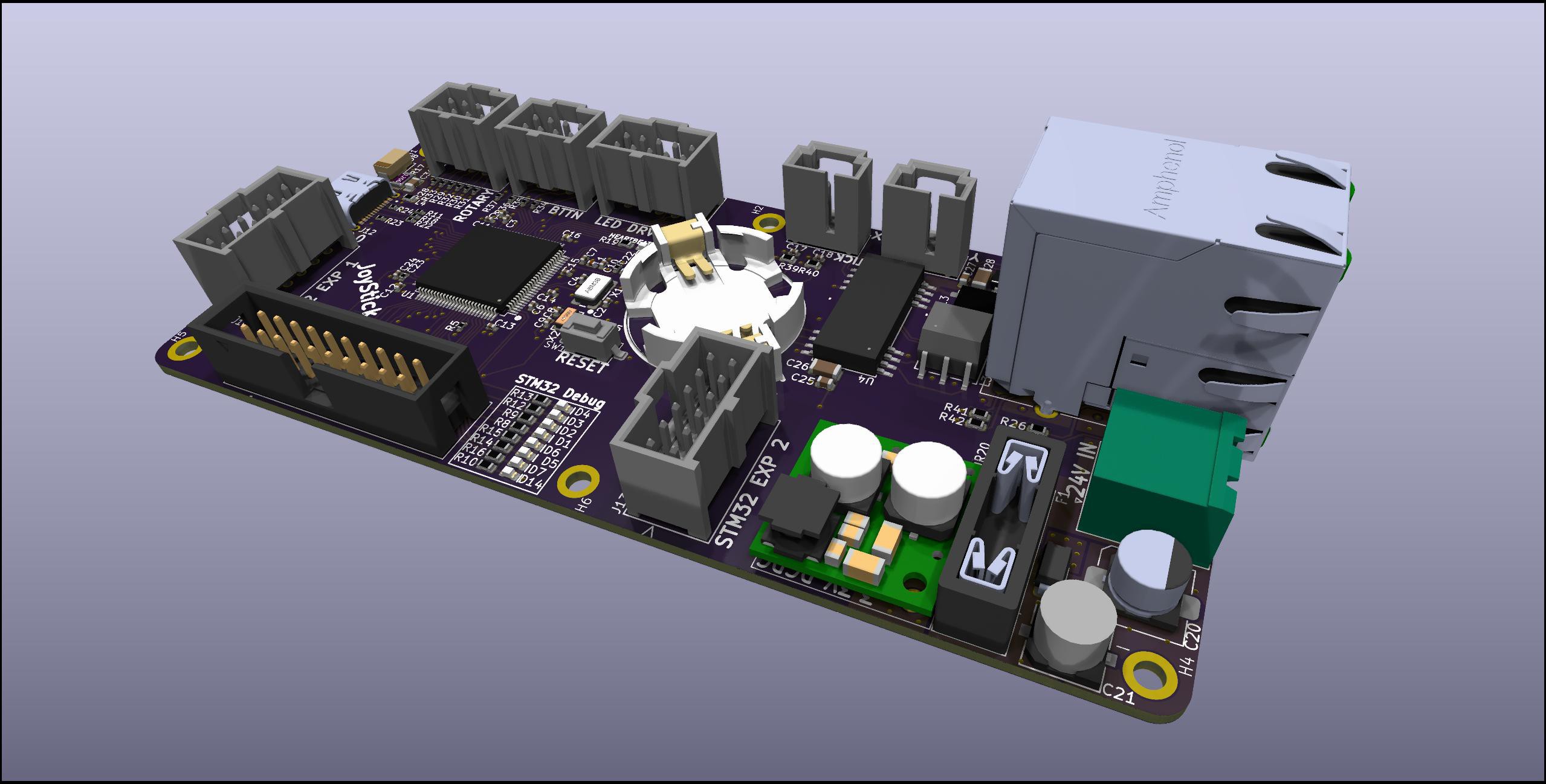
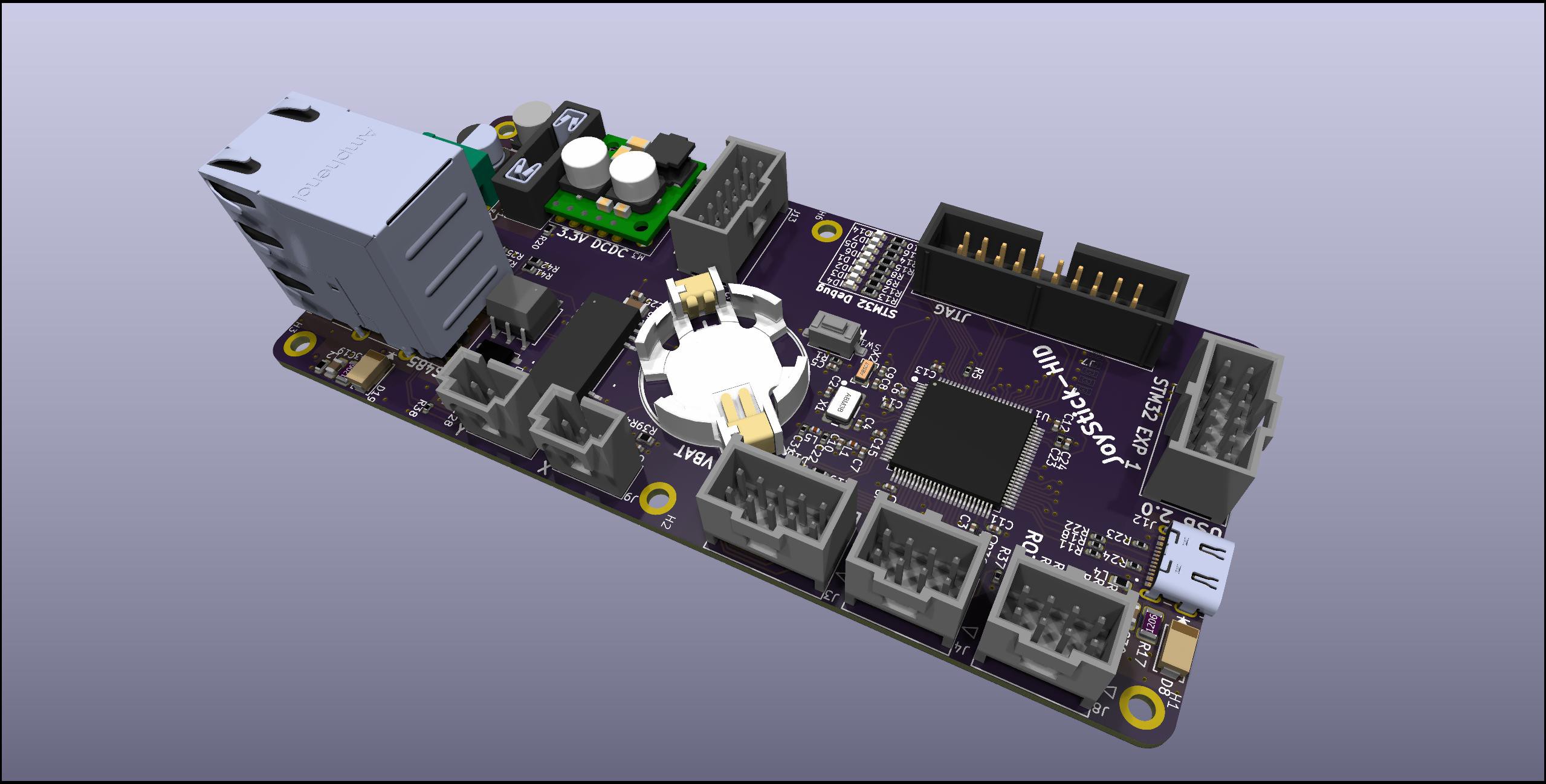
Chair Recline System
The Recline control system allows the wheel chair user to adjust the recline position of their chair at their leisrure. Its a complete electrical controls system with with safety in mind. The system is split across two piece of electrical hardware design as two separated printed circuit boards. The First board functions as the controller and human machine interface, the second board functions as an intelligent controller for the actuators, solenoids, and air compressor related to controlling the chair recline postion and the chair's pneumatic suspension.The human machine interface board is called the Reline Control board, and the actuator controller is called the Recline Actuator Control board.
The system is split across two printed circuit boards for a couple of reasons, the signals from the switches and buttons are low voltage signals, running those signals through long wires would cause problems witha accurately reading the position of the rocker switches and buttons due to voltage drop, the LEDs in the 7 segment display have a low forward voltage and need to be close to the driving source for them to work, if the wire is too long voltage drop would prevent the LEDs from turning on, the other reason is the actuators and solenoids are high voltage signals and need to be mounted close to the control board. The Recline Control Board will be mounted on the arm rest of the users's dominant hand, it runs off 24V power and sends commands to the Recline Actuator control board via RS485 serial communication. The Recline Actuator Control board will be mounted in a secure location most likely at the botton of the chair between the chair and it the rolling chassis, it will be fed 24V power and connect to the Recline Control Baord via RS485.
Block Diagram:

Board Specs and Renders:
Recline Control Board
The other board, called the Recline Control board, functions as the user interface and control center. Here's what it does:
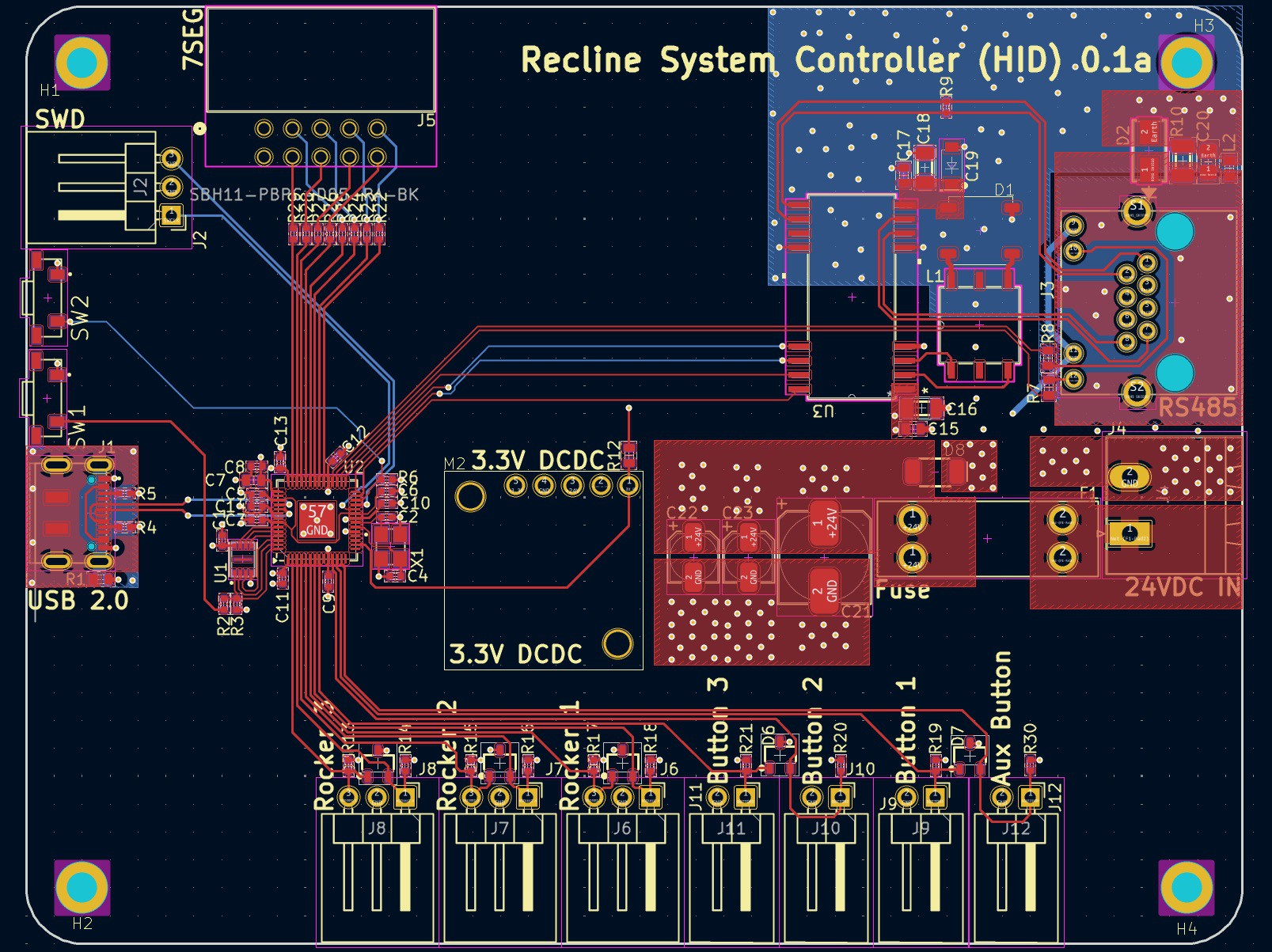
Acts as the Human-Machine Interface (HMI): This board is where the user interacts with the system, using buttons and rocker switches to adjust the recline position of the chair.
Processes Low-Voltage Signals: It handles low-voltage signals from the user input controls, like switches and buttons, to avoid issues with voltage drop.
Displays Information: Includes a 7-segment display to show information, such as the recline position, which requires low forward voltage and needs to be close to the control board to avoid voltage drops.
Sends Commands via RS485: It sends user commands to the Recline Actuator Control board through RS485 serial communication, which then controls the actuators and other high-voltage components.
Mounted for User Access: It’s mounted on the armrest of the user's dominant hand, providing easy access for adjustments.
In essence, the Recline Control board is the user-friendly interface, interpreting user input and communicating these commands to the Recline Actuator Control board via RS485 to execute the recline and suspension adjustments.
Specs:
- RP2040 Microcontroller
- Pololu DCDC Switching Regulator Modules for 3.3V and 5V Power
- Locking Molex connector for Rocker Switches and Buttons
- RJ45 Connector for RS485 Signals
- Phoenix Contact high voltage connector for Power Input
- Automotive Blade Fuse Carrier and Crowbar Circuit Protection
3D Renders:
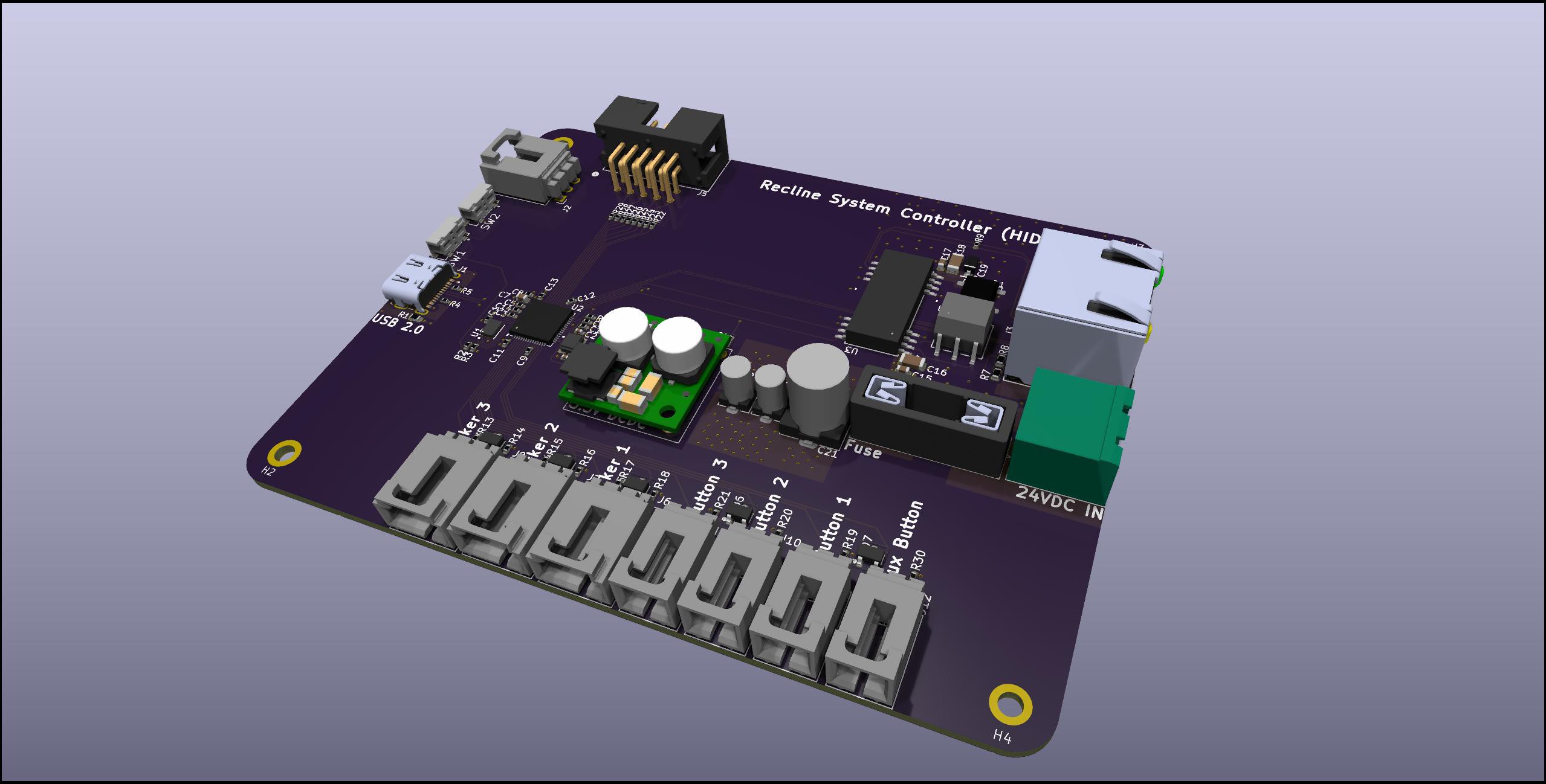

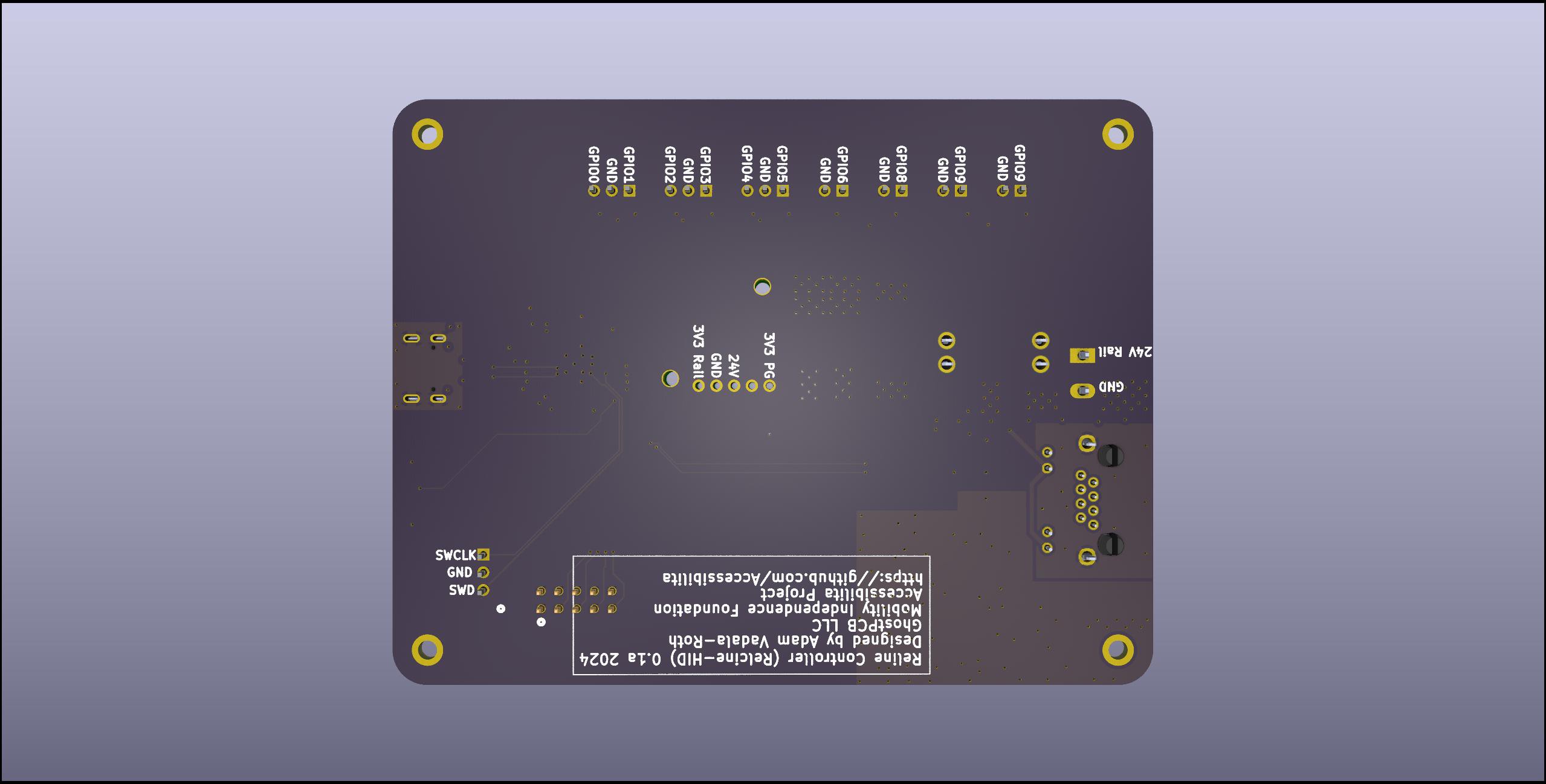
Recline Actuator Board
The Recline Actuator Control board manages the high-voltage signals and controls the mechanical components involved in adjusting the wheelchair's recline position and pneumatic suspension. Specifically, it:
- Controls Actuators and Solenoids: It interfaces with and controls the actuators and solenoids that adjust the recline position.
- Manages the Air Compressor: It controls the air compressor for the chair's pneumatic suspension.
- Receives Commands via RS485: The board receives commands from the Recline Control board through an RS485 serial communication link.
In summary, this board serves as the power and actuator management hub, ensuring precise, responsive adjustments to the chair's recline and suspension functions based on user commands.
Specs:
- RP2040 Microcontroller
- Pololu DCDC Switching Regulator Modules for 3.3V and 5V Power
- RJ45 Connector for RS485 Signals
- Phoenix Contact high voltage connector for Power Input
- Automotive Blade Fuse Carrier and Crowbar Circuit Protection
- Phoenix Contact high voltage connectors for solenoids and DC Motors
- x2 VNH5019 H-Bridges
- 5 MOSFETS for controlling solenoids and air pump
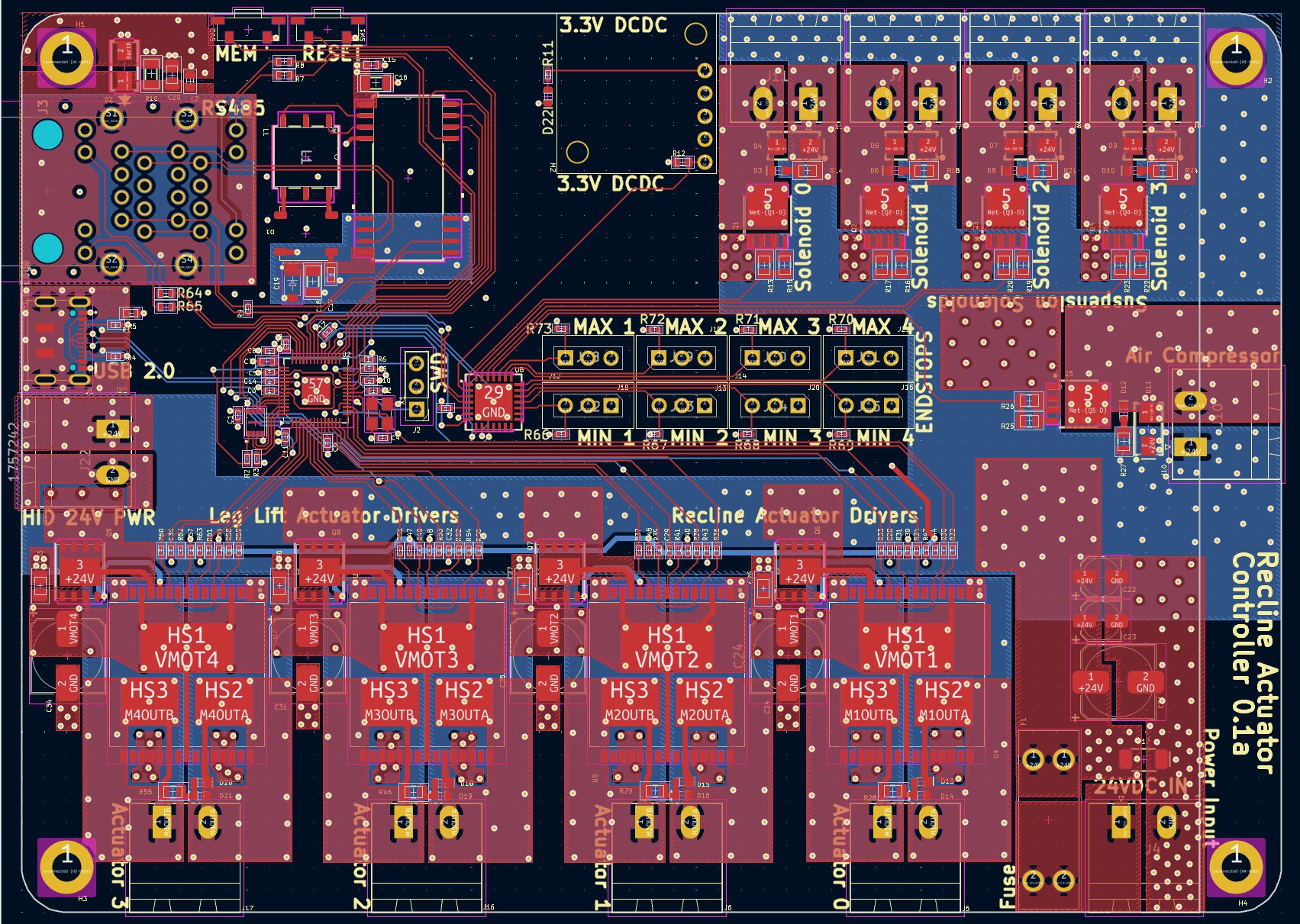
3D Renders:
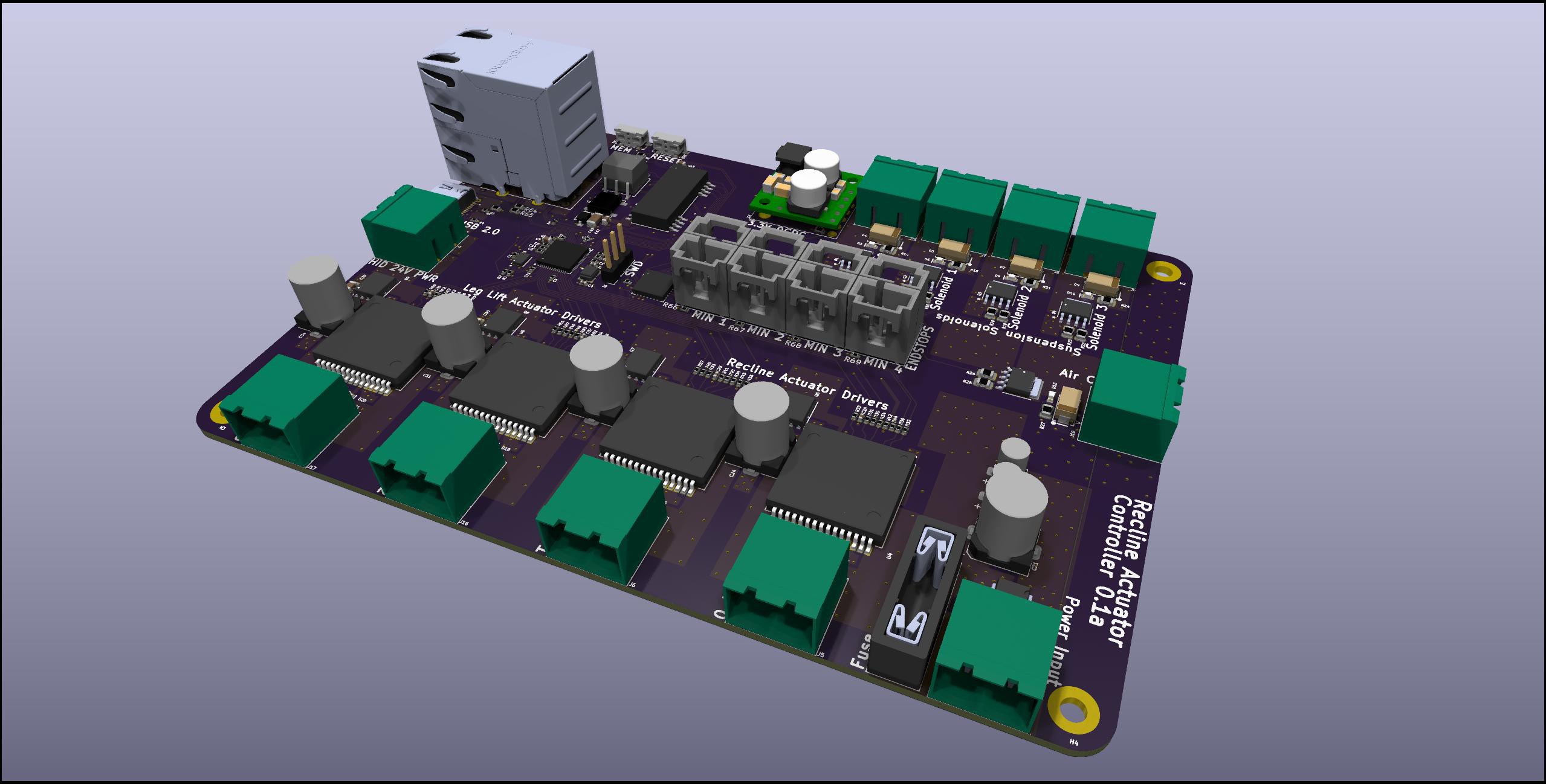
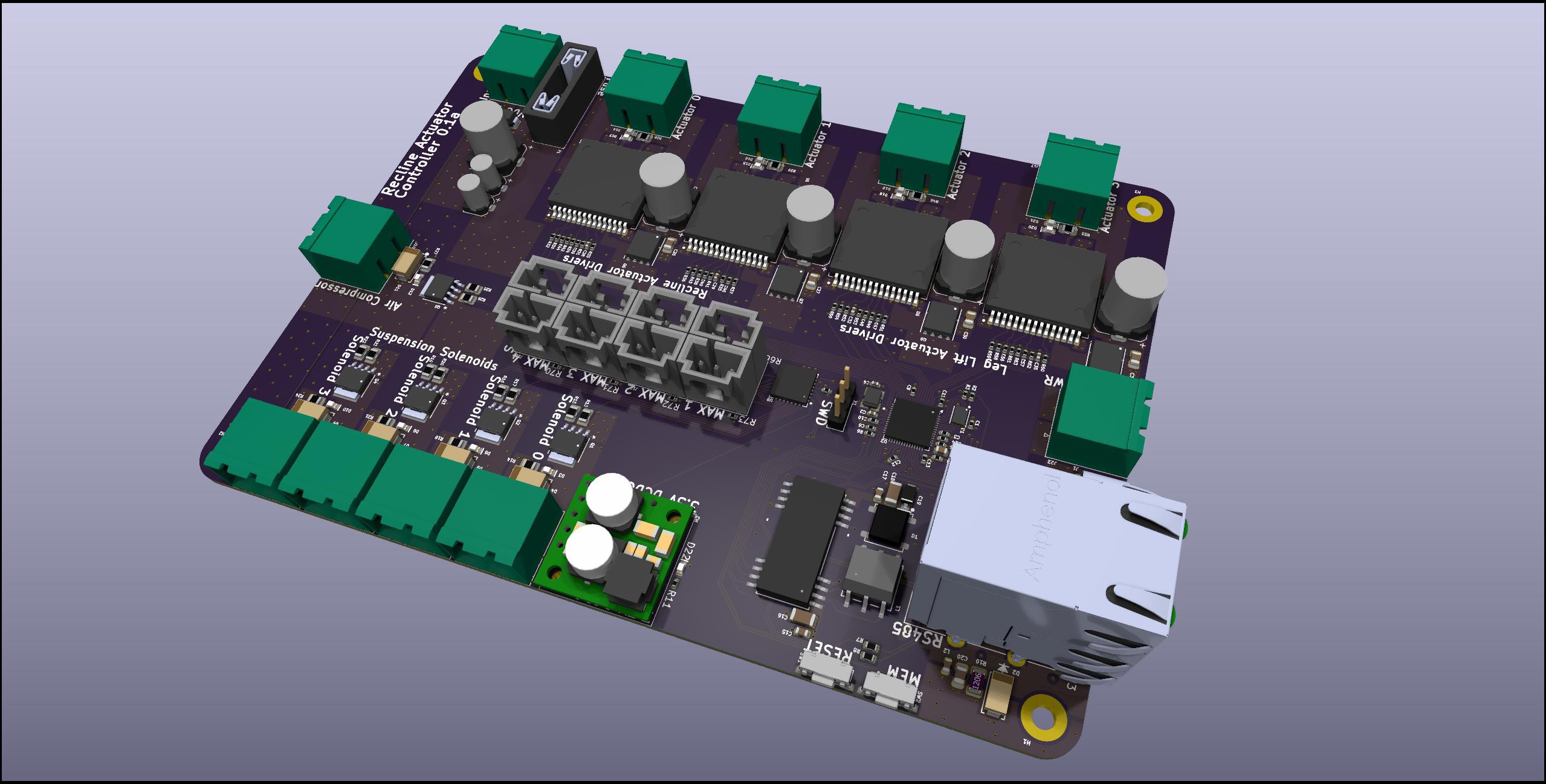
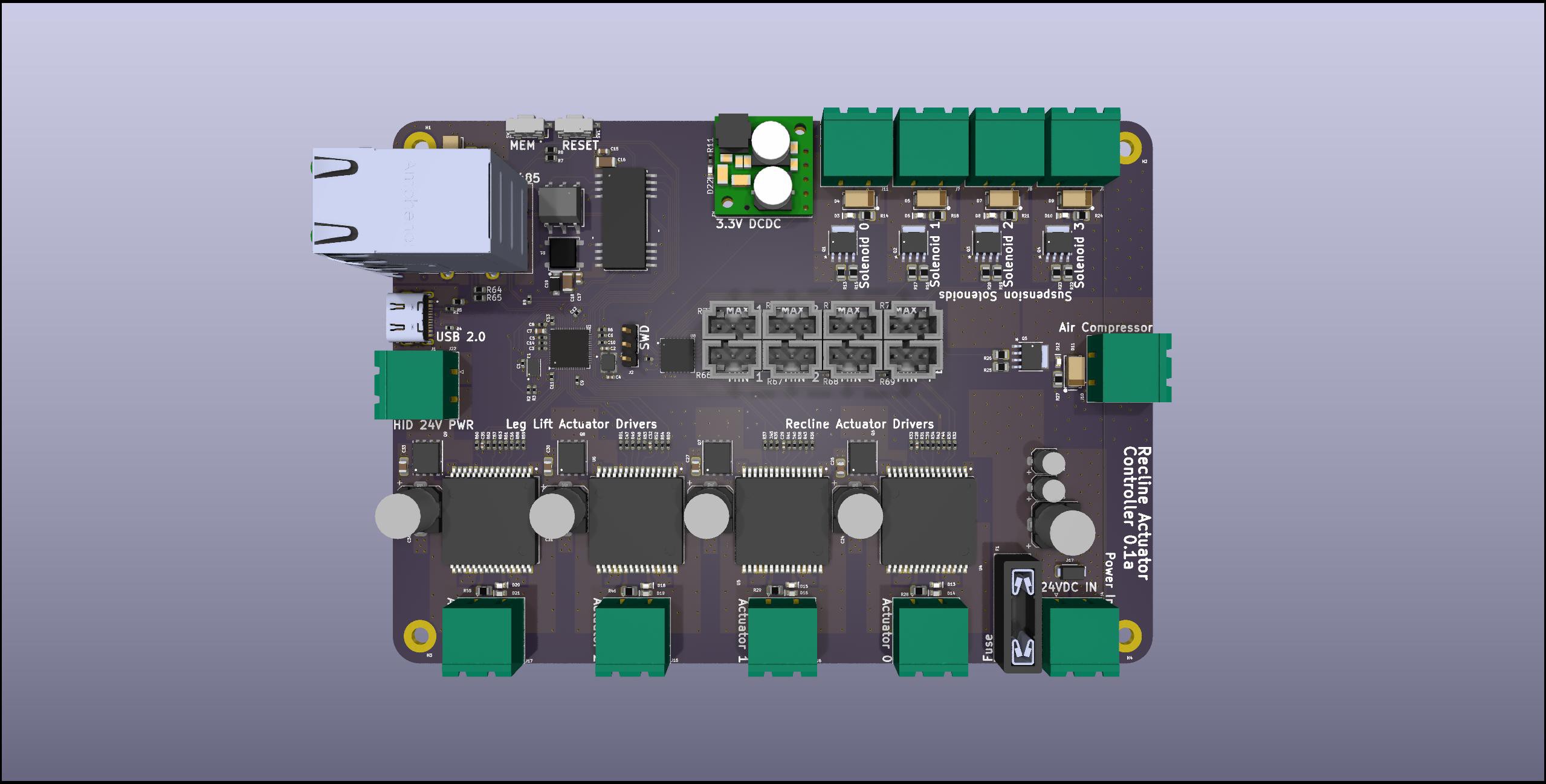
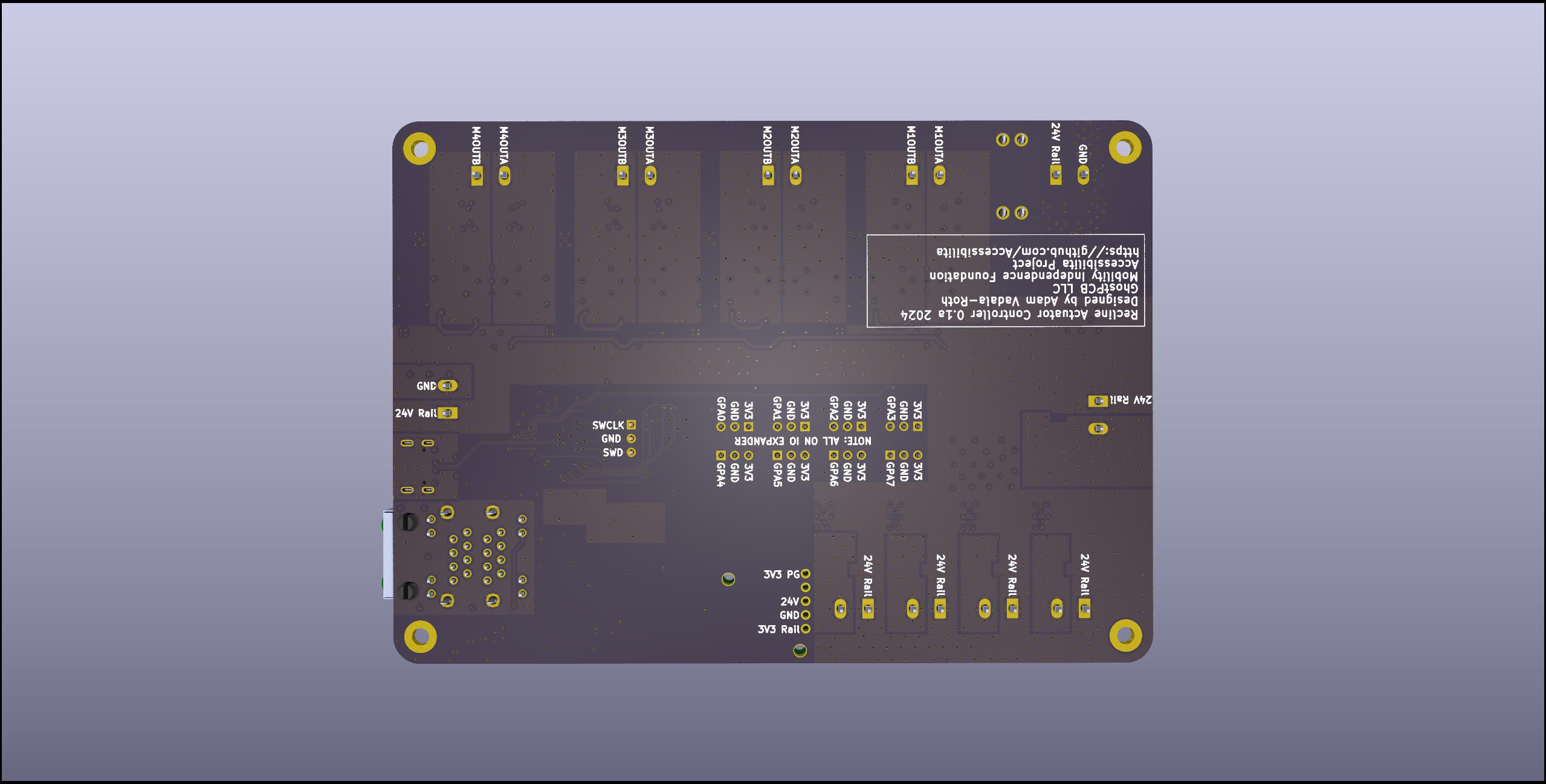
 AVR
AVR